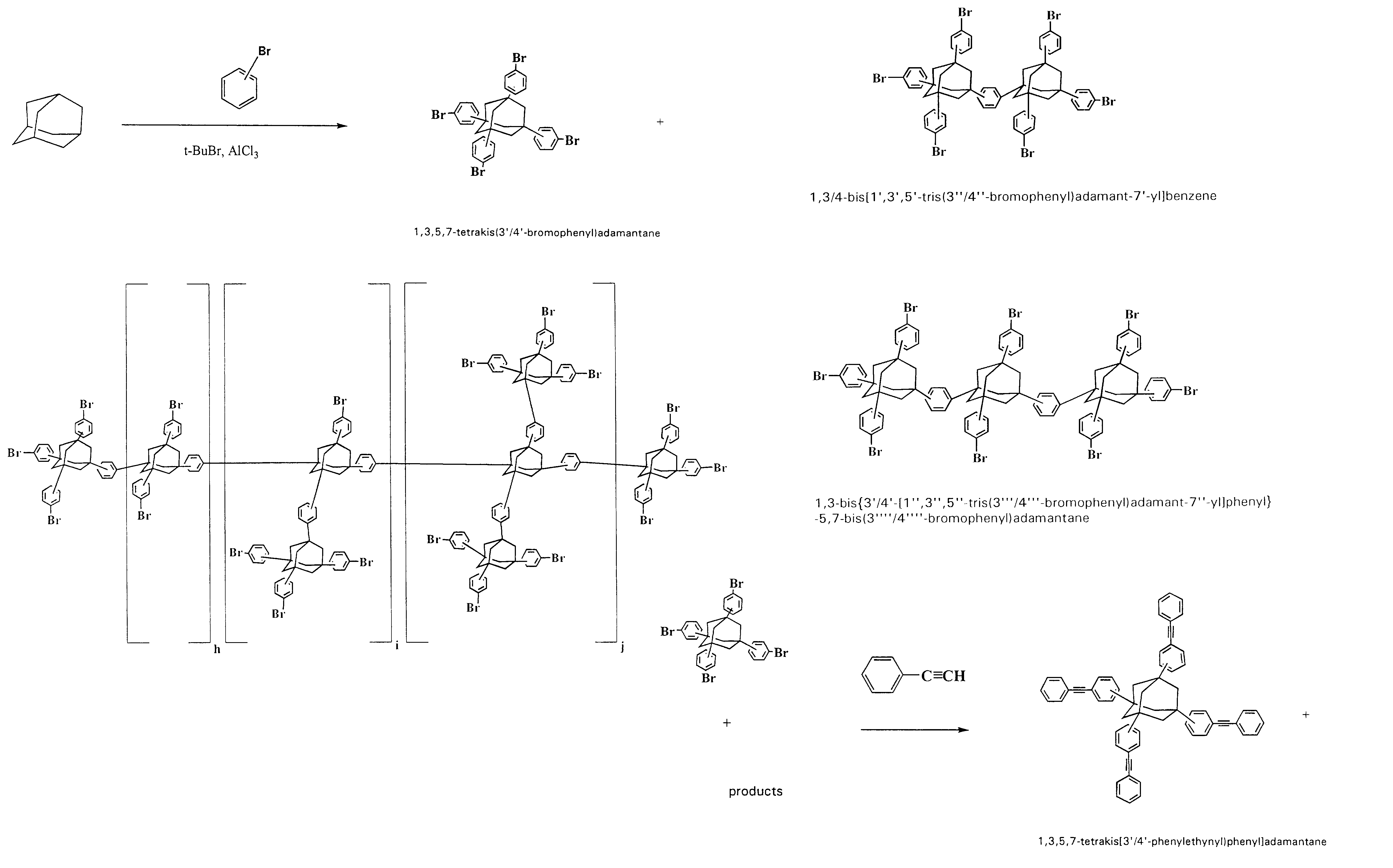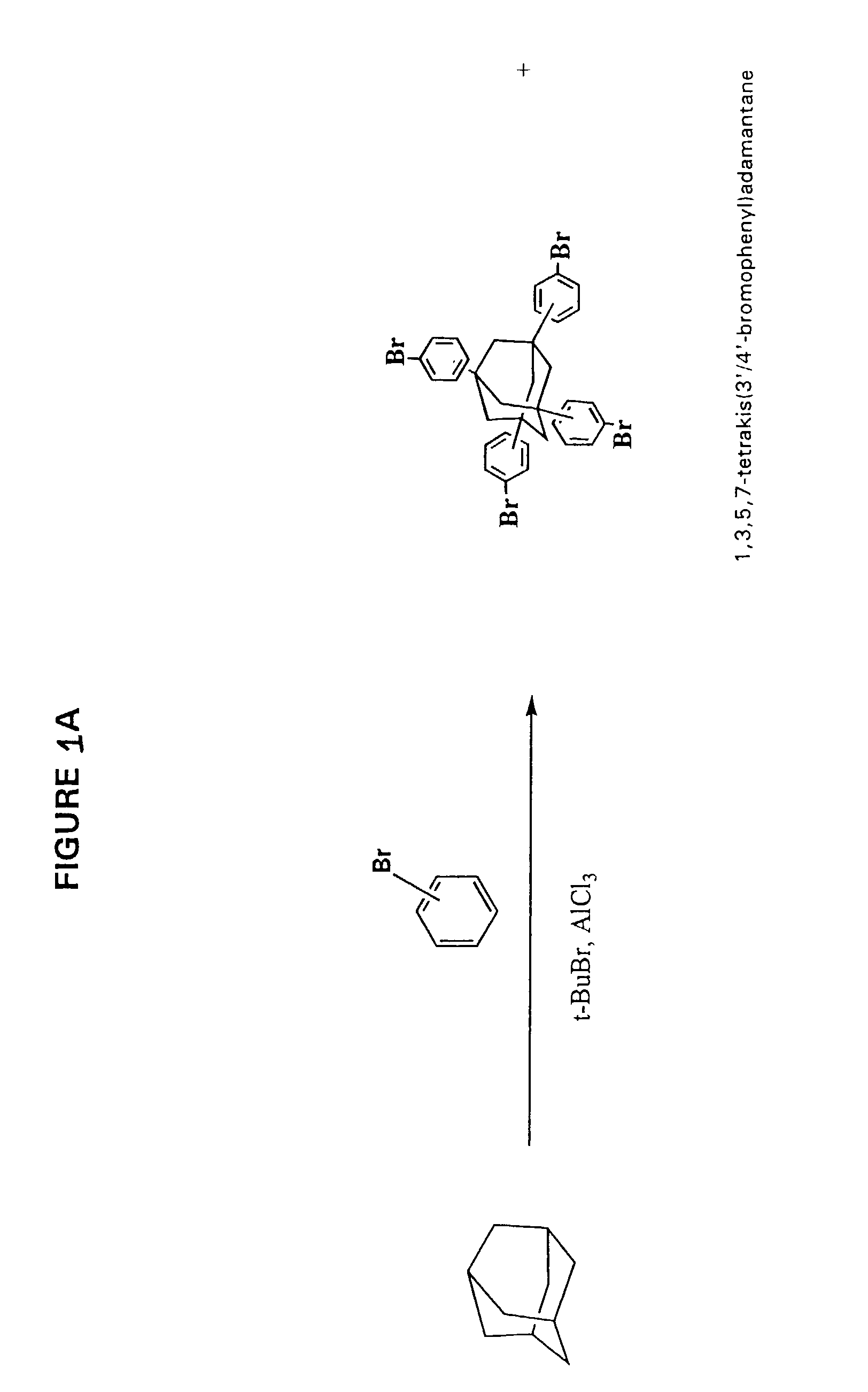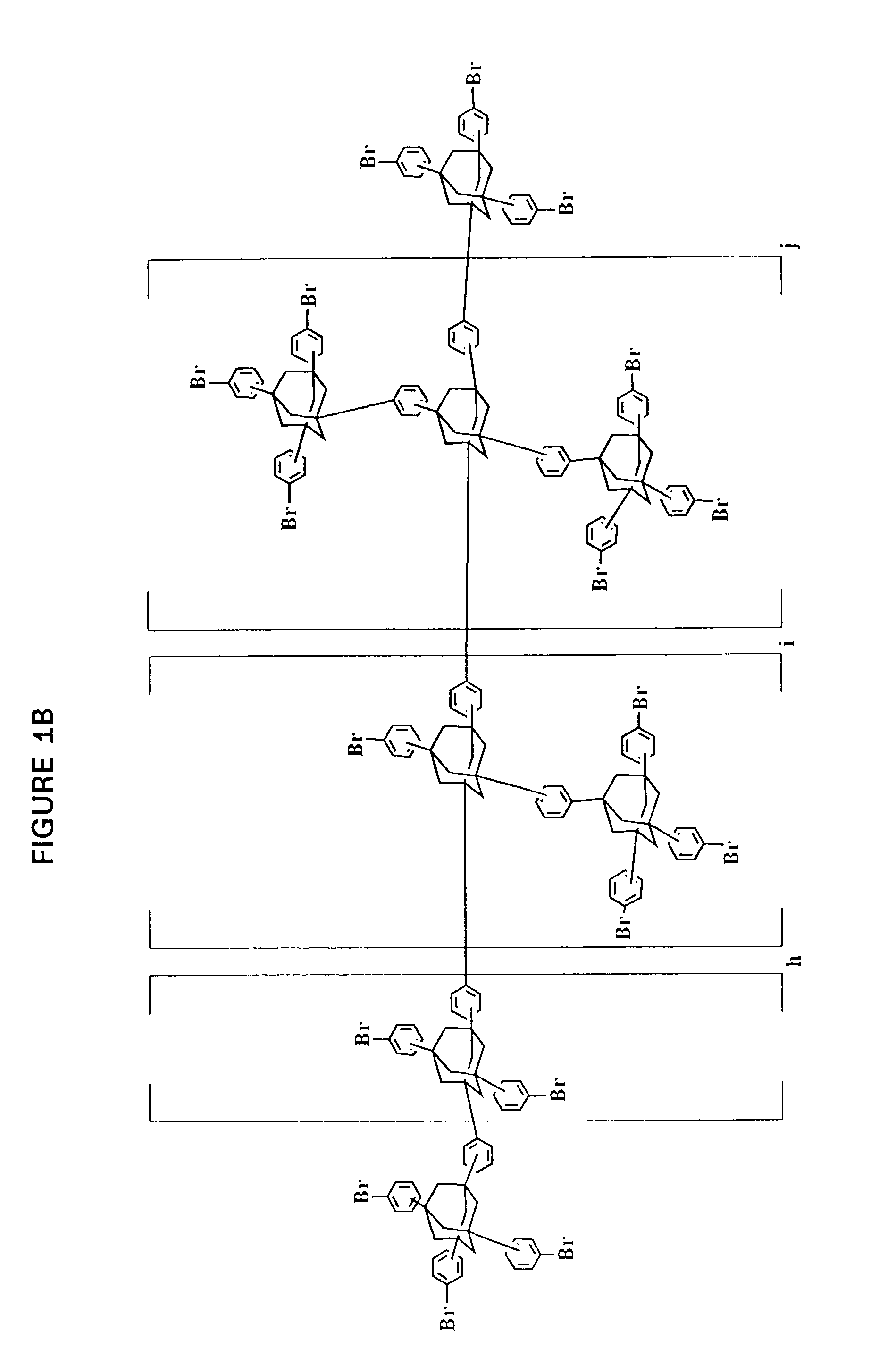Organic compositions
a technology of organic compositions and dielectric materials, applied in the field of semiconductor devices, can solve the problems of failure to exhibit many of the combined physical and chemical properties desirable and even necessary for effective dielectric materials, and inability to achieve the combined physical and chemical properties of many publications
- Summary
- Abstract
- Description
- Claims
- Application Information
AI Technical Summary
Benefits of technology
Problems solved by technology
Method used
Image
Examples
examples
Comparative A:
[0212]We measured the dielectric constant of a composition similar to Example 5 of our International Patent Publication WO 01 / 78110 and the dielectric constant was 2.7.
Comparative B:
[0213]Although WO 00 / 31183 teaches that polybutadiene is useful as a porogen, we tried polybutadiene as a porogen by adding it to a composition similar to Inventive Examples 4–7 in our pending U.S. Ser. 60 / 350,187 filed Jan. 15, 2002 and learned that regardless of the polybutadiene's molecular weight, the composition's refractive index did not change as shown in Table 3 below and thus, a lower dielectric constant material could not be achieved.
[0214]
TABLE 3AdhesionRe-PorogenPromoterfractivePorogen%%SolventIndexPolybutadiene356.7Xylene1.629(Mw 1800)Polybutadiene phenyl356.7Cyclohexanone1.623terminated (Mw 1000)Poly(indene-co-356.7Cyclohexanone1.602coumarone) (Mw 735)Poly(indene-co-356.7Xylene1.607coumarone) (Mw 735)Poly(indene-co-356.7Cyclohexanone1.600coumarone) (Mw 1090)Poly(indene-co-356....
preparation 3
[0251]Impact of Solvent on ratio of 1,3,5,7-tetrakis[3′,4′-(phenylethynyl)phenyl]adamantane (shown in FIG. 1D) to 1,3 / 4-bis{1′,3′,5′-tris[3″ / 4″-phenylethynyl)phenyl]adamant-7′-yl} benzene (shown in FIG. 1F) and at least 1,3-bis{3′ / 4′-[1″,3″,5″-tris[3 ′″ / 4′″-(phenylethynyl)phenyl]adamant-7″-yl]phenyl}-5,7-bis[3″″ / 4″″-(phenylethynyl) phenyl]adamantane (shown in FIG. 1F)
[0252]850 milliliters of P1 Step (a) Product was divided into four equal parts, and subjected to precipitation in petroleum ether, ligroine, heptane, and methanol. Each part was precipitated into 2520 ml of the solvent, vacuum filtered (Büchner funnel diam. 185 mm), washed on filter twice by 150 ml of the solvent, then dried in a vacuum oven for two hours at about 20° C., overnight at 40° C., and at 70–80° C. to constant weight.
[0253]Precipitation into hydrocarbons resulted in very dispersed light beige powders that dried without complications. Precipitation into methanol gave heavy, brownish granular solid (particles s...
##ventive example 1
Inventive Example 1
Preparation of Porogen Comprising Copolymer of Acenaphthylene and Vinyl Pivalate
[0261]A porogen comprising copolymer of acenaphthylene and vinyl pivalate was made as follows. To a 250-milliliter flask equipped with a magnetic stirrer were added 20 grams of technical grade acenaphthylene (75% pure—corresponds to 0.986 mole of pure acenaphthylene), 3.1579 grams (0.0246 mole) of vinyl pivalate, 0.5673 gram (2.464 millimole) of di-tert-butyl azodicarboxylate and 95 milliliters of xylenes. The mixture was stirred at room temperature for ten minutes until a homogeneous solution was obtained. The reaction solution was then degassed at reduced pressure for five minutes and purged with nitrogen. This process was repeated three times. The reaction mixture was then heated to 140° C. for six hours under nitrogen. The solution was cooled to room temperature and added into 237 milliliters of ethanol dropwise. The mixture was kept stirring at room temperature for another 20 minu...
PUM
| Property | Measurement | Unit |
|---|---|---|
| Diameter | aaaaa | aaaaa |
| Temperature | aaaaa | aaaaa |
| Temperature | aaaaa | aaaaa |
Abstract
Description
Claims
Application Information
 Login to View More
Login to View More - R&D
- Intellectual Property
- Life Sciences
- Materials
- Tech Scout
- Unparalleled Data Quality
- Higher Quality Content
- 60% Fewer Hallucinations
Browse by: Latest US Patents, China's latest patents, Technical Efficacy Thesaurus, Application Domain, Technology Topic, Popular Technical Reports.
© 2025 PatSnap. All rights reserved.Legal|Privacy policy|Modern Slavery Act Transparency Statement|Sitemap|About US| Contact US: help@patsnap.com



